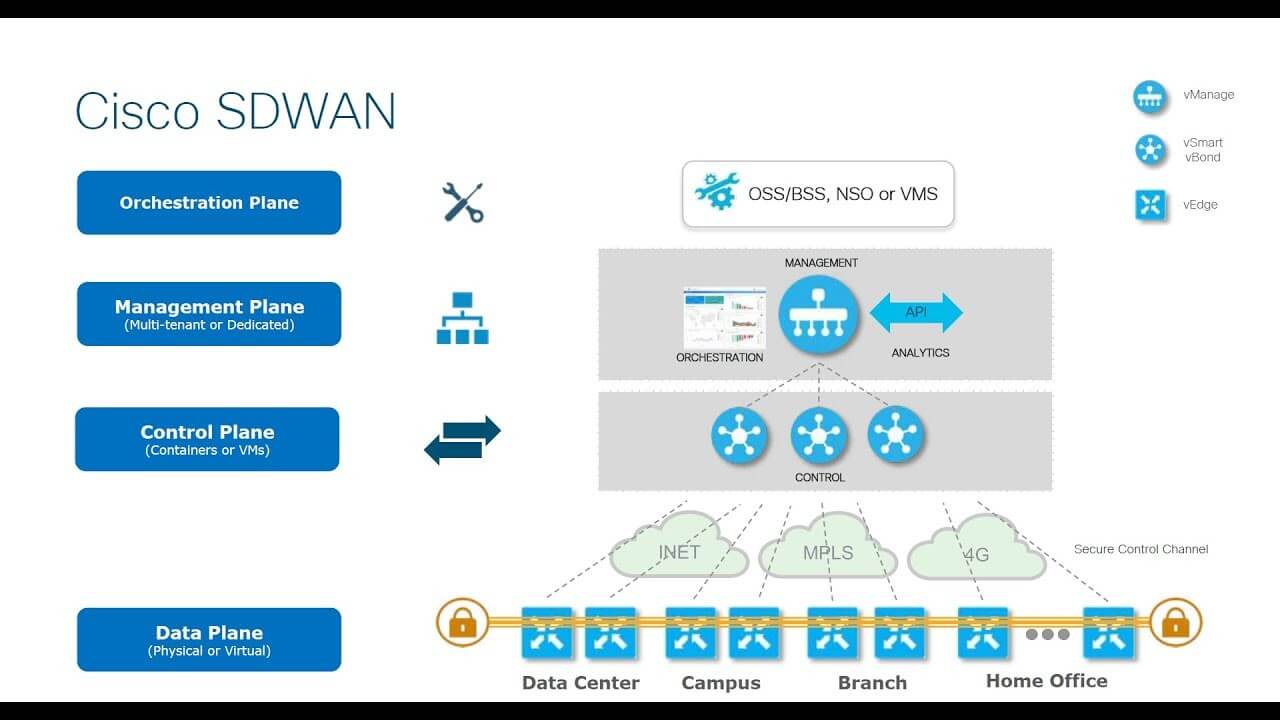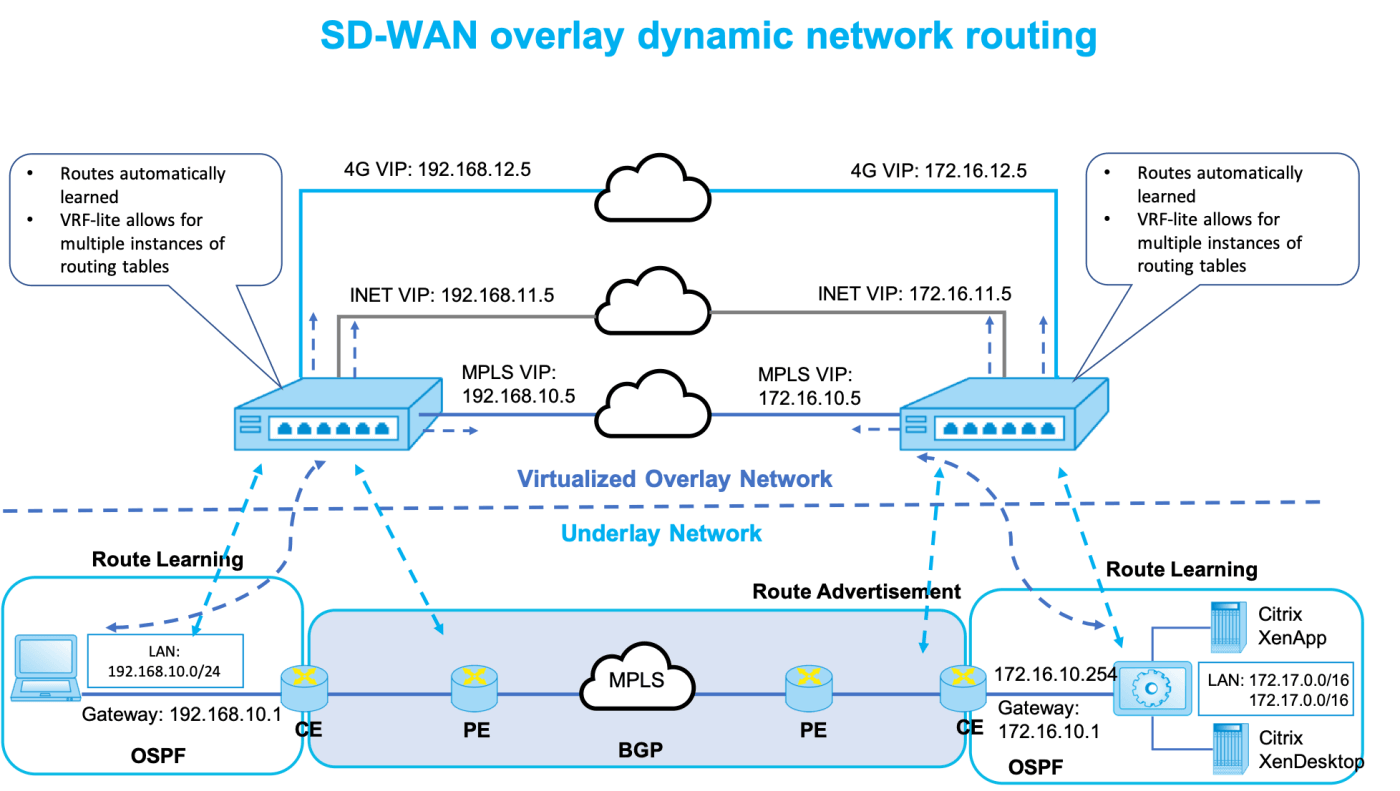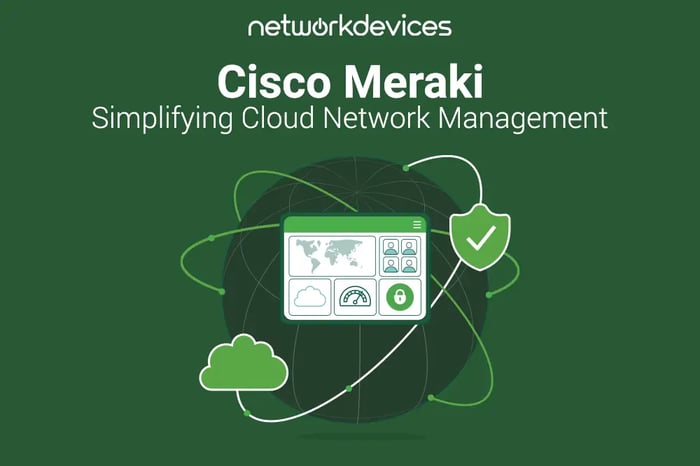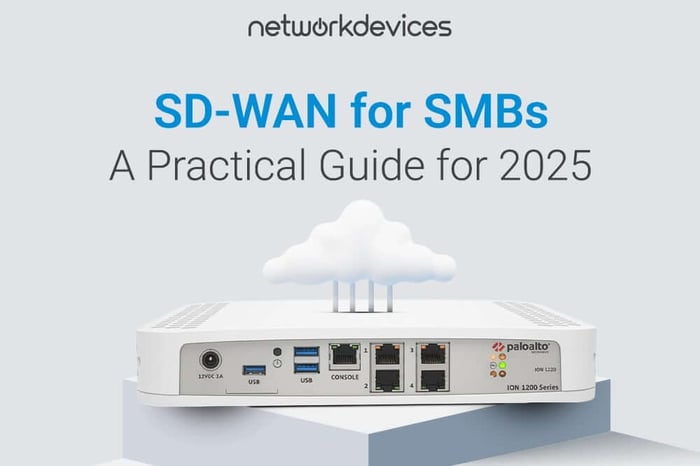You have no items in your shopping cart.

SD-WAN is the Future: Top 5 Solutions in 2024
 Humna Ghufran
Comparison
|
Buying Guide
|
Software/License/Protocol
Humna Ghufran
Comparison
|
Buying Guide
|
Software/License/Protocol
03/26/2024 10:32am
11 minute read
In the digital transformation era, businesses worldwide face an unprecedented challenge: ensuring seamless, secure, and efficient connectivity across increasingly distributed workforces and cloud-based resources. Enter SD-WAN, the technological beacon for enterprises navigating the complexities of modern networking needs. Today, adopting software-defined wide area networking (SD-WAN) is not just an option; it's becoming necessary for organizations to thrive in a cloud-centric world.
This article explains what software-defined WAN is and how it improves business networks. It also compares the top solutions that will shape the future of connectivity. To accelerate toward complete cloud migration or enhance remote work capabilities, understanding SD-WAN's advantages and the leading solutions is the first step toward achieving network agility and performance.
According to a study by Pumble Learn, 86% of employees and executives cite the lack of effective collaboration and communication as the leading causes of workplace failures. Teams who communicate effectively may increase their productivity by as much as 25%.
As a result, there is a rising trend of organizations running smaller sites over internet VPNs and utilizing commercially available broadband public internet services to ensure uninterrupted network connectivity and business operations.
However, these scenarios present both advantages and challenges, highlighting the need for a solution like software-defined WAN.
In this article, we’ll talk about what SD-WAN is, why it’s so popular, and the top 5 solutions for 2024.
What is a Software-Defined Wide Area Network?
SD-WAN stands for software-defined wide area network. It is a new approach to enterprise networking that virtualizes WAN connections and uses software to control and manage network traffic flow. It emerged in the early 2010s, utilizing virtual appliances, emerged in the early 2010s as a solution to the limitations of traditional WAN architectures.
Unlike the virtual WAN architecture, traditional WANs rely on expensive dedicated circuits like MPLS for connecting branch offices and data centers. This makes managing them costly, rigid, and complex as the network scales. SD-WAN provides a cost-effective alternative by embodying the virtual WAN architecture, allowing enterprises to build WANs using any combination of transport connections like broadband, LTE, and MPLS.
SD-WAN Architecture Explained
SD-WANs, employing virtual appliances, offer a fundamentally different architecture than traditional WANs that rely heavily on costly networking hardware. Whereas traditional WANs rely on dedicated hardware appliances to route traffic, SD-WANs utilize software-defined networking and network virtualization technologies to abstract the network control plane from the data plane.
This centralized control function allows them to be efficiently configured and managed from the cloud, providing greater agility in managing hybrid WAN connections. Policies and priorities can be defined in software and pushed out to edge devices across the WAN.
Through the SD-WAN gateway, they use overlay networks to intelligently manage traffic. This allows multiple physical networks like MPLS, broadband, and LTE to act as one logical network. Through the SD-WAN gateway, traffic can be intelligently routed across the best available connection at any given time, adhering to central policies.
Rather than backhauling all traffic to centralized data centers as with hub-and-spoke networks, SD-WANs enable direct local internet breakouts closer to users and services. This provides better performance for cloud and SaaS applications.
The ability to use multiple overlay networks gives SD-WANs increased redundancy, availability, and adaptability compared to reliance on single MPLS connections. Adding or changing transport services is easier with SD-WAN since the overlays abstract away the underlying physical topology.
SD-WAN Market Growth & Transformation
According to PS Market Research, the Software-defined WAN market is expected to grow at a CAGR of 31.2% from 2022 to 2030, with the market size expected to reach $30,907.6 million in 2030.

Similarly, GMI Insights predicts that the SD-WAN market will grow at a CAGR of 65% from 2023 to 2032, with the market size estimated to be valued at $4 billion in 2022.
Businesses are increasingly adopting SD-WAN to simplify network operations, increase security, and support digital transformation. According to Cisco, SD-WAN offers several advantages, including:
● Reducing costs with transport independence across MPLS
● 4G/5G LTE and other connection types
● Improving application performance and increasing agility
● Optimizing user experience and efficiency for software-as-a-service (SaaS) and public-cloud applications
● Simplifying operations with automation and cloud-based management
As businesses continue to adopt cloud-based applications and infrastructure, software-defined WANs are expected to play a critical role in navigating through different transport types and providing greater flexibility.
Maximizing Network Efficiency and Performance: SD-WAN Advantages
The increased use of software-defined WAN has been driven by the desire to improve performance and security. The technology allows enterprises to leverage SD-WAN services, including integrated security service edge (SSE) features, to optimize their networks and enhance user experience.
“SD-WAN represents the next logical step for service providers to enhance their portfolios and enable their customers to leverage the full benefits of an Internet and cloud-based communications infrastructure.”
SD-WAN offers several advantages over traditional WANs:
1. Cost Efficiency
One of the significant benefits of SD-WAN is enabling enterprises to achieve cost savings on their WAN infrastructure. The reason behind this is that they gain access to more efficient bandwidth utilization and better quality of service. With its help, enterprises can also avoid getting locked into long-term contracts with expensive monthly fees.
2. Enhanced Business Agility
SD-WAN provides enterprises with enhanced business agility. They enable them to connect to multiple locations across the globe through a single connection while delivering optimal performance at each location. It also ensures that critical applications are always available and always perform as expected.
3. Multi-Connection Optimization
SD-WAN optimizes bandwidth usage by intelligently distributing traffic across multiple WAN connections according to application requirements and bandwidth availability at any location.
This helps businesses save money on expensive leased lines and reduce downtime due to network outages caused by hardware failures or natural disasters such as earthquakes or hurricanes.
4. Automated Network Provisioning
SD-WANs offer automated network provisioning, which allows for dynamic configuration of network resources. This will enable businesses to quickly adapt to changing business needs without having to involve IT staff.
IT staff can focus on strategic initiatives rather than routine tasks by automating these processes, which align with zero trust network access principles.
5. Zero Touch Provisioning (ZTP)
Zero Touch Provisioning (ZTP) is an SD-WAN feature that allows customers to set up their networks without any manual intervention from their IT department.
ZTP allows customers to set up their networks in just a few minutes by using preconfigured templates that only require minimal input from the customer’s side.
6. Performance Improvement
A single SD-WAN can replace multiple point-to-point circuits, which requires more expensive hardware and adds complexity to the network. With an SD-WAN, you can use the same hardware in each branch office location and at your headquarters.
This means you can save on costs and simplify management by centralizing all your remote office connections on one device.
7. Enhanced Network Security
Traditional WAN technology has some inherent secure connectivity issues due to its centralized nature; if someone were to gain access to the primary office router or switch, they could wreak havoc on all branches connected through that central device.
By decentralizing your remote offices with an SD-WAN solution, you create multiple points of entry for potential attackers, making it much harder for them to gain access across various sites at once.
Top 5 SD-WAN solutions for 2024
Here are the top 5 SD-WAN solutions for 2024:
1. Cisco: Innovating Enterprise Connectivity
Cisco offers a solution called SD-WAN Cisco, based on its acquisition of Viptela in 2017. Cisco SD-WAN provides centralized management, application-aware policies, dynamic path selection, and zero-touch deployment. It supports hybrid WAN connectivity and integration with Cisco security and collaboration tools.

Features:
● Connects users to applications seamlessly across multiple clouds.
● Integrates security, predictive operations, and network visibility in one easy-to-use setup.
● Runs on a SASE-enabled architecture for streamlined and secure access.
● Simplifies network operations with a user-friendly dashboard.
● Offers centralized configuration, management, and monitoring for the entire SD-WAN network.
● Visualizes processes for easy understanding and efficient control.
2. VMware: Streamlining Cloud Access
VMware SD-WAN is one of the earliest and most widely adopted platforms. It provides optimized SaaS and cloud connectivity along with built-in security features. VMware SD-WAN supports hybrid WAN links and integrates with VMware NSX for network automation.
VMware Offers:
● Zero-touch deployments, simplified operations, and one-click service insertion.
● Transport-independent performance for the most demanding applications, leveraging economical bandwidth.
● Direct cloud access with performance, reliability, and security.
● Enables seamless insertion and chaining of virtualized services on-premises and in the cloud.
● Exhaustive real-time analytics that delivers actionable insights.
3. Fortinet: Integrating Security
Fortinet offers the FortiGate SD-WAN solution, which combines SD-WAN capabilities with next-generation firewall security. It provides application steering, dynamic path selection, and an easy-to-use centralized controller. FortiGate SD-WAN can help consolidate branch security and WAN connectivity into a single platform.

FortiGate Offers:
● World’s only ASIC-accelerated SD-WAN solution that delivers high-speed application performance.
● Provides full-stack multilayer security capabilities on the premises and in the cloud. This integrated security offers real-time threat protection where and when it is needed.
● Simplifies network operations with centralized management, configuration, process, and monitoring across the entire SD-WAN fabric.
● Ensures the highest level of application availability and performance over any WAN transport.
● Enables secure, fast connectivity and high performance to, in, and between cloud applications.
4. Versa Secure SD-WAN: Customization Opportunities
Versa Networks focuses exclusively on SD-WAN with its FlexVNF software platform. It supports a wide range of WAN link options and provides integrated routing, security, unified threat management, and more. Versa is flexible, cost-effective, and fully software-based.

Versa Secure Offers:
● Provides seamless connectivity to multiple cloud platforms, supporting a hybrid or multi-cloud architecture.
● Dynamically adjusts traffic paths to optimize application performance, enhancing user experience.
● Offers robust analytics and reporting tools for deep insights into network performance and user behavior.
● Integrates SASE principles, combining SD-WAN and security for a holistic networking solution.
5. Citrix: Optimizing Cloud and SaaS Performance
Citrix SD-WAN optimizes SaaS and cloud application delivery with features like packet duplication, WAN link bonding, and dynamic compression. It seamlessly integrates with other Citrix products, including load balancers, application delivery controllers, and more.
The software-defined WAN market has a wide variety of established and startup vendors. Companies should evaluate their specific needs and use cases to determine the best solution for their business. Key capabilities to compare include hybrid WAN support, zero-touch deployment, integrated security, unified management, and cloud integration.

Citrix Offers:
● Intelligently selects the best path for application traffic, optimizing performance and ensuring a consistent user experience.
● Enhances application performance by optimizing WAN traffic, reducing latency, and improving overall efficiency.
● Provides granular visibility into application usage and performance, allowing for informed decision-making.
● Seamlessly integrates with Citrix Workspace, offering a unified platform for application delivery and user access.
Is SD-WAN the Future?
The SD-WAN market is poised for rapid growth in the coming years. According to IDC, revenues for the Software-Defined Wide Area Network (SD-WAN) infrastructure market will reach $5.25 billion in 2023, growing at a compound annual rate of 30.8% over the 2018-2023 forecast period.
Several factors are driving this growth:
● Continued shift to the cloud: As more organizations move their applications and workloads to the cloud, they need an agile, cloud-friendly WAN architecture like SD-WAN. This allows them to connect cloud-based resources efficiently.
● IoT and edge computing: The growth in connected devices and edge computing is also accelerating SD-WAN adoption. It makes securely connecting distributed IoT devices easier.
● Network agility: With this solution, organizations gain more agile, flexible networks that can be easily modified as needs change. This is attractive for modern, dynamic businesses.
● Reduced costs: SD-WAN offers the ability to reduce WAN costs by leveraging less expensive consumer internet services. Organizations can optimize costs.
New SD-WAN capabilities are also on the horizon:
● Further automation: Vendors will introduce solutions with increased automation, reducing management overhead. Machine learning will be leveraged for dynamic traffic steering and security.
● Hybrid WAN advancements: Integration across MPLS, broadband internet, and 5G will improve to enable optimal application performance over hybrid WANs.
● Expanded security: Native security will be reinforced with elements like micro-segmentation, encrypted traffic flows, and integrated firewalls.
Given the benefits and future potential, IDC forecasts a compound annual growth rate of 10% and expects the market to reach $7.5 billion by 2027. It is on track to become the mainstream WAN architecture for organizations of all sizes.
Conclusion: Finding the Right Fit
Empower your organization by choosing the right SD-WAN solution. This begins with a thorough understanding of your specific requirements. Evaluate your existing network infrastructure, align your strategic goals with cloud computing, and cater to the needs of your distributed workforce.
While there is no universal solution, you can leverage insights and comparisons to navigate this process. When comparing options, consider the technical specifications and long-term benefits of enhanced agility, improved performance, and robust security that SD-WAN solutions offer.
Related Articles
Cisco Meraki: Simplifying Cloud Network Management
6 minute read
11/14/2024 10:50am
SD-WAN for SMBs: A Practical Guide for 2025
6 minute read
10/07/2025 11:00am
Spanning Tree Protocol Mistakes and How to Avoid Them
12 minute read
04/02/2024 10:04am












